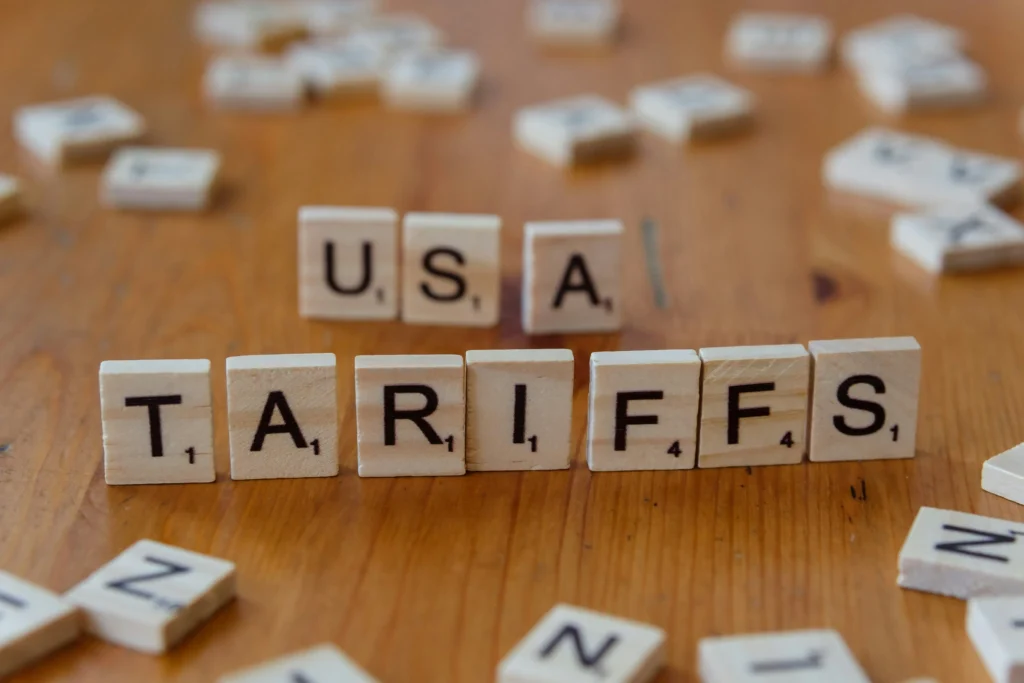
Is America at a boiling point?
Since becoming president, Donald Trump has added more and more tariffs on certain countries and products to protect American businesses. At first, the plan faced delays and changes, but the most recent updates have triggered strong reactions around the world. This has caused markets to become unstable and slow down economic growth.
Tariffs are shaking global markets. Let’s delve into America’s Latest Politics.
U.S. May Raise Tariffs Further by Targeting Foreign Taxes
According to a recent report, the U.S. can charge the same import taxes that other countries charge on American goods. But most of these countries already have low taxes, so the increase would usually be small.
But the Trump administration is thinking about adding even more taxes in response to other charges, like value-added taxes (VAT) or digital taxes, that some countries place on U.S. companies.
If this happens, it could have a bigger impact on the economy. These extra taxes, on top of regular tariffs, could make goods more expensive. Even if the U.S. makes special deals with some countries, the overall effect could still be strong.
If these extra tariffs are added, average U.S. import taxes can go up by 12%, going above 20%, which may lead to higher prices and slower economic growth.
Economic Trouble Ahead?
After the first set of tariffs started in April, the U.S. economy began to show warning signs. Fewer jobs were being added, prices were slowly going up, and home values in some areas started to fall.
Many experts now worry that the U.S. economy is slowly weakening.
President Trump said tariffs would help fix America’s trade problems. But many importers rushed to bring in goods before the tariffs started. Because of this, the trade gap grew larger, reaching $582.7 billion in the first half of the year, a 38% increase from 2024. At the same time, construction spending dropped nearly 3% over the past year.
It’s Not Just the U.S.
Other countries are feeling the pain too. Germany, which sends 10% of its exports to the U.S., saw its factories produce less, down 1.9% in June, after earlier U.S. tariffs took effect.
On Wednesday, Trump announced an extra 25% tariff on goods from India because of its oil trade with Russia. That brings India’s total tariffs to 50%. This can hurt over half of their exports to the U.S. and can cause them to lose big customers.
“This sudden price increase is too much. We’re already making very little profit,” said S.C. Ralhan, head of India’s export group.
In Switzerland, leaders rushed to the U.S. to try to stop a 39% tariff on Swiss goods, but they failed. Now, drugs and computer chips from Switzerland will be hit with new taxes. Trump also announced a 100% tariff on computer chips. Many fear this could freeze parts of the U.S. economy as it waits to see what happens next.
Why Is Trump Using Tariffs?
Trump says tariffs will help Americans buy more products made in the U.S., bring in more money through taxes, and encourage businesses to invest more in the country.
He also wants to shrink the trade deficit, the difference between how much the U.S. buys from other countries and how much it sells to them. Trump believes the U.S. has been treated unfairly in trade and says other countries have taken advantage of it.
To fix this, he has announced tariffs on certain goods and on products from specific countries. But many of these tariffs were later changed, delayed, or cancelled.
Trump often makes bold or confusing statements about tariffs to pressure other countries into making better trade deals for the U.S.
Sometimes, he adds other demands too. For example, when placing tariffs on China, Mexico, and Canada, he also asked them to do more to stop illegal drugs and migrants from entering the U.S.
On July 14, Trump also warned he might put high tariffs on companies that do business with Russia if the war in Ukraine doesn’t end within 50 days.
The U.S. Is Starting to Feel the Impact
Things are beginning to change in the U.S.
Prices in stores are slowly rising. Inflation, the rate at which prices go up, is getting higher. Both regular inflation and a special measure used by the Federal Reserve show prices are climbing more than they did the month before.
The job market is also slowing down. In July, only 73,000 new jobs were added, much fewer than the 100,000 experts expected. It gets worse, reports show the U.S. added 258,000 fewer jobs in the two months before than originally thought. After this news, Trump fired the official who was in charge of collecting job data, claiming, without proof, that she changed the numbers on purpose.
Along with fewer jobs, the overall economy is also growing more slowly.
Conclusion
Well, from the current news, we can not say at the moment that America is at its boiling point, but the storm is also far from over.
Tariffs are no doubt a tool of protection, but if misused, they can result in raising prices and slowing growth. Trump is not just having a trade war; he is also political gambling and taking revenge. The world has all eyes on America, and we will see which turn it will take in the coming days.
FAQs
Q1:What is the tariff in the USA?
Ans: Government taxes on the value of imported goods, including freight and insurance, are known as tariffs or duties.
Q2: Is a tariff a sales tax in the USA?
Ans: If a buyer is purchasing tangible personal property from an importer who adds a tariff fee to the price, that fee is not considered a direct federal tax. Instead, it’s part of the total purchase price.

